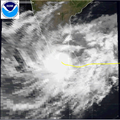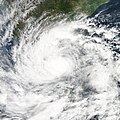This article may be in need of reorganization to comply with Wikipedia's layout guidelines .(October 2020) |
Sri Lanka is an island nation in the Indian Ocean. The country is vulnerable to cyclones due to its position near the confluence of the Arabian Sea, the Bay of Bengal and the Indian Ocean. [1]












